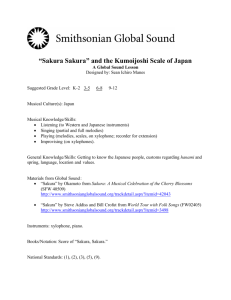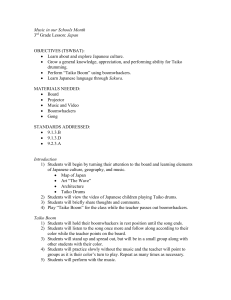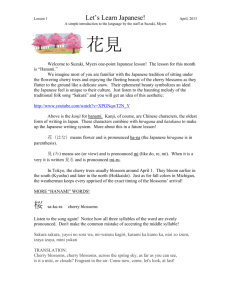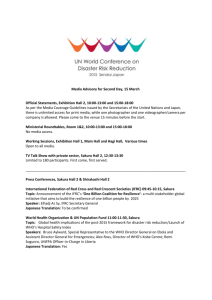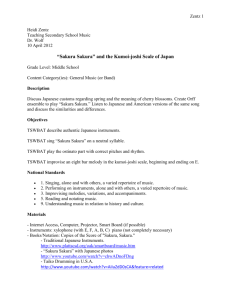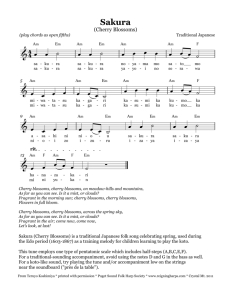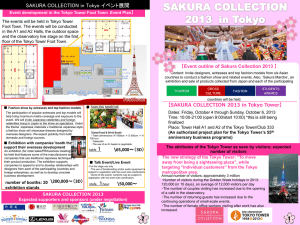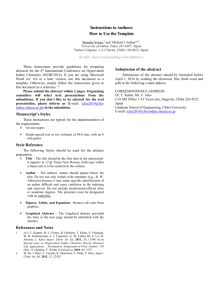“Sakura Sakura” and the Kumoijoshi Scale of Japan
advertisement
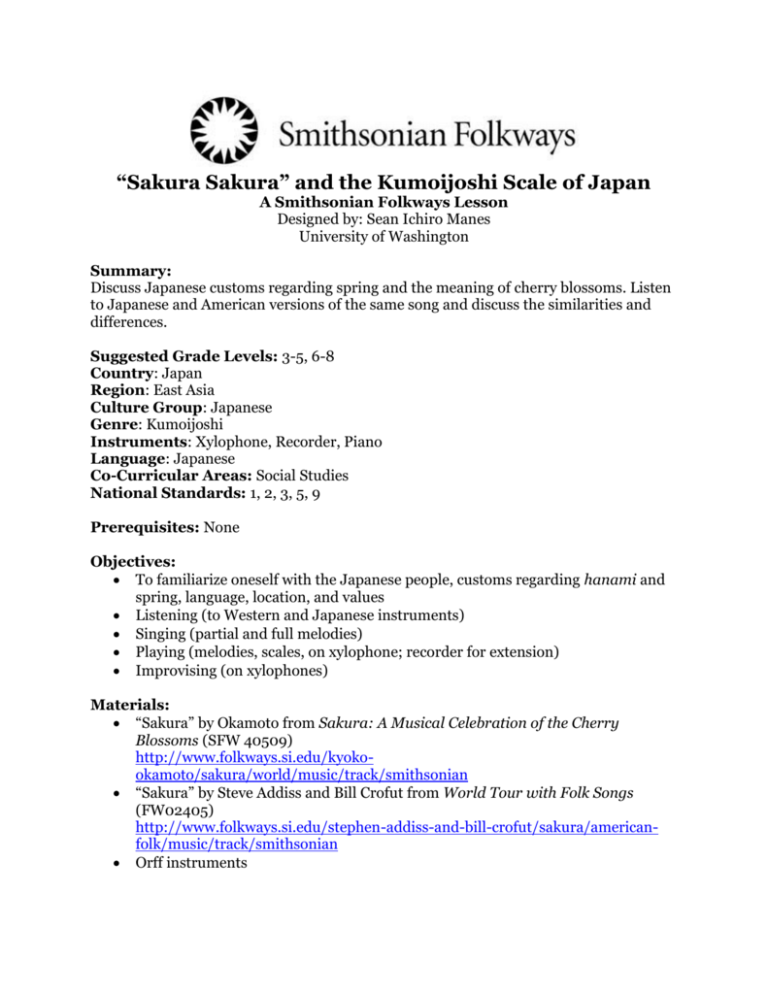
“Sakura Sakura” and the Kumoijoshi Scale of Japan A Smithsonian Folkways Lesson Designed by: Sean Ichiro Manes University of Washington Summary: Discuss Japanese customs regarding spring and the meaning of cherry blossoms. Listen to Japanese and American versions of the same song and discuss the similarities and differences. Suggested Grade Levels: 3-5, 6-8 Country: Japan Region: East Asia Culture Group: Japanese Genre: Kumoijoshi Instruments: Xylophone, Recorder, Piano Language: Japanese Co-Curricular Areas: Social Studies National Standards: 1, 2, 3, 5, 9 Prerequisites: None Objectives: To familiarize oneself with the Japanese people, customs regarding hanami and spring, language, location, and values Listening (to Western and Japanese instruments) Singing (partial and full melodies) Playing (melodies, scales, on xylophone; recorder for extension) Improvising (on xylophones) Materials: “Sakura” by Okamoto from Sakura: A Musical Celebration of the Cherry Blossoms (SFW 40509) http://www.folkways.si.edu/kyokookamoto/sakura/world/music/track/smithsonian “Sakura” by Steve Addiss and Bill Crofut from World Tour with Folk Songs (FW02405) http://www.folkways.si.edu/stephen-addiss-and-bill-crofut/sakura/americanfolk/music/track/smithsonian Orff instruments Lesson Segments: 1. “Sakura, Sakura” (National Standards 1, 2, 3, 5, 9) 1. “Sakura, Sakura” a. Play recording of “Sakura” by Okamoto. i. Ask students to tap lightly with the beat ii. Ask students to try to figure out where the song might be from (the first 60-90 seconds of the track is sufficient) iii. Briefly have students share their thoughts of the listening example by discussing where the song might be from, why it might be from a given location, what specifically in the music reminds them where it’s from, etc. b. State that this is a song from Japan. i. Show pictures of cherry blossoms ii. Share with them the fond affection that the Japanese feel for the cherry blossom, the annual parties that the Japanese have when the cherry blossoms are in full-bloom, and how the cherry blossom blooms for such a short time is an allusion to the brevity of life c. Inform students that this song is written using a Japanese scale called the “kumoi-joshi” scale, which is made up of the pitches E, F, A, B, C. d. Hand out score and teach the song to the students (use a version that does not use a “D” in the last phrase if written in A minor). i. Teach bass xylophones the ostinato that is E-B-E’ over 2 beats (2 eighths followed by quarter); have extraneous pitches (G and D) removed from the Orff instruments beforehand ii. Have the class sing gently over the ostinato e. Invite students to improvise an 8-beat pattern, beginning and ending on the pitch “E” i. Give students one minute to figure out what they might want to do individually (or in pairs) f. Have each individual student/pair exhibit their “improvisation”. g. Play the Steve Addiss and Bill Crofut version of “Sakura” to the class. i. Briefly discuss how these two Americans have “changed” the song from how it was performed on the koto in the original recording (a portion of the “original” may be replayed, if desired) ii. Briefly discuss how the Japan-inspired work on the recording is similar and/or different from the class’s Japan-inspired creation from today’s lesson iii. Briefly discuss how music from a different part of a world can inspire musicians to create something very different from what they’re “used to” Extension: Create an Orff-inspired arrangement of “Sakura” using xylophones, recorders (using both a melody and a counter melody), and singing, and perform it at a concert. Assessment: Are students able to identify where this song is from? Are students able to sing the melody? Are students able to improvise an 8-beat pattern on the Orff instruments?
